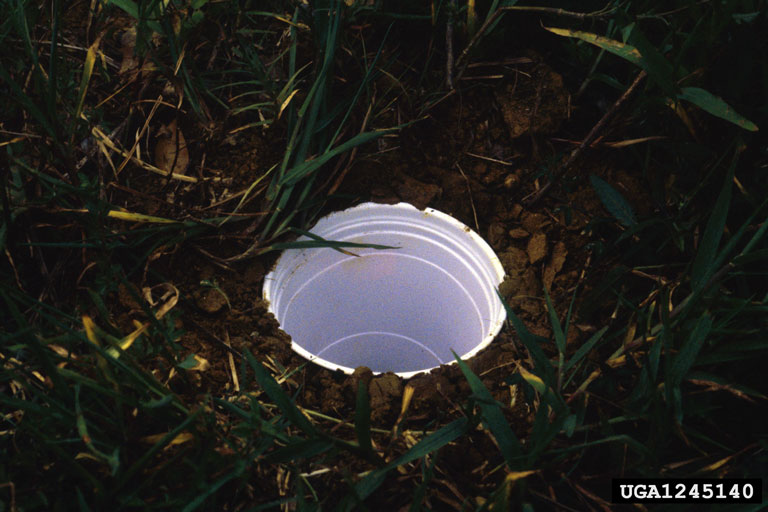Michigan insects in the garden - Season 2 Week 4: Scarites
Scarites are a large predatory ground beetle.

Large beetles with massive mandibles living in the ground? While this may sound frightening, ground beetles in the genus Scarites are a regular occurrence below and at the soil surface. At 0.5-1 inch in length, these are among the longest species of ground beetle in Michigan. With a narrow waist between the thorax and abdomen and narrow antennae (Photo 1), they are easily recognized. They are large enough that transmitters have been placed on their abdomens for evaluating their behavior in agricultural fields.
Scarites burrow in the ground with a preference for sandy soils. One unique aspect about this genus is their excellent acting skills. If you approach too closely, a Scarites will lie on its back and play dead for several seconds or several minutes. When not playing dead, Scarites use their large mandibles to devour caterpillars, flies and other small to medium sized insects—some pests and some predators.
Adults spend the daytime resting at or just below the soil surface and hunt for predators in the evening and night. They spend the winter as larvae or adults. Their larvae are slender and could be confused for a fast-moving millipede with jaws. Larvae also contribute to natural pest control with their large mandibles (Photo 2). Adult and larval Scarites play an important role in biological control of pests in soy, corn and vegetable fields.

A way to find Scarites and other ground beetles
If uncertain whether Scarites occur in your garden, you can set up a pitfall trap, a mechanism used for sampling soil-dwelling insects (Photo 3). To set a pitfall trap, dig a hole, place a 12-16 ounce plastic party cup underground with the lid flush at ground level, and wait 24-48 hours for insects to fall into the cup. If rain is forecasted, cover the cup with a small Styrofoam or plastic cup lid or plate held into the ground by chopsticks. For a simpler search, try turning over stones, logs or paving blocks.

How can I conserve beneficial beetles such as Scarites?
Attracting soil-dwelling predators is not an easy task. Leaving an undisturbed and unmown refuge area will create habitat that supports a variety of above-ground and below-ground insects that can hide in brush. Keeping beneficial insects such as Scarites, other ground beetles or spiders may lead to better natural pest control and consequently less damage to plants in the garden. Limiting unnecessary pesticide applications in lawns and gardens is a must to avoid harming ground beetles and other beneficial insects.
A study by Michigan State University Extension researchers found greater predation from ground beetles, which includes the genus Scarites, in asparagus fields bordered by unmanaged areas. In residential gardens, there is likely also a greater possibility of more natural pest control when the right type of ground beetle habitat is available. Diverse gardens that include flowers and ornamental grasses contain the variety of habitats and hidden spaces that will increase the number of beneficial ground-dwelling predators such as Scarites.



 Print
Print Email
Email





